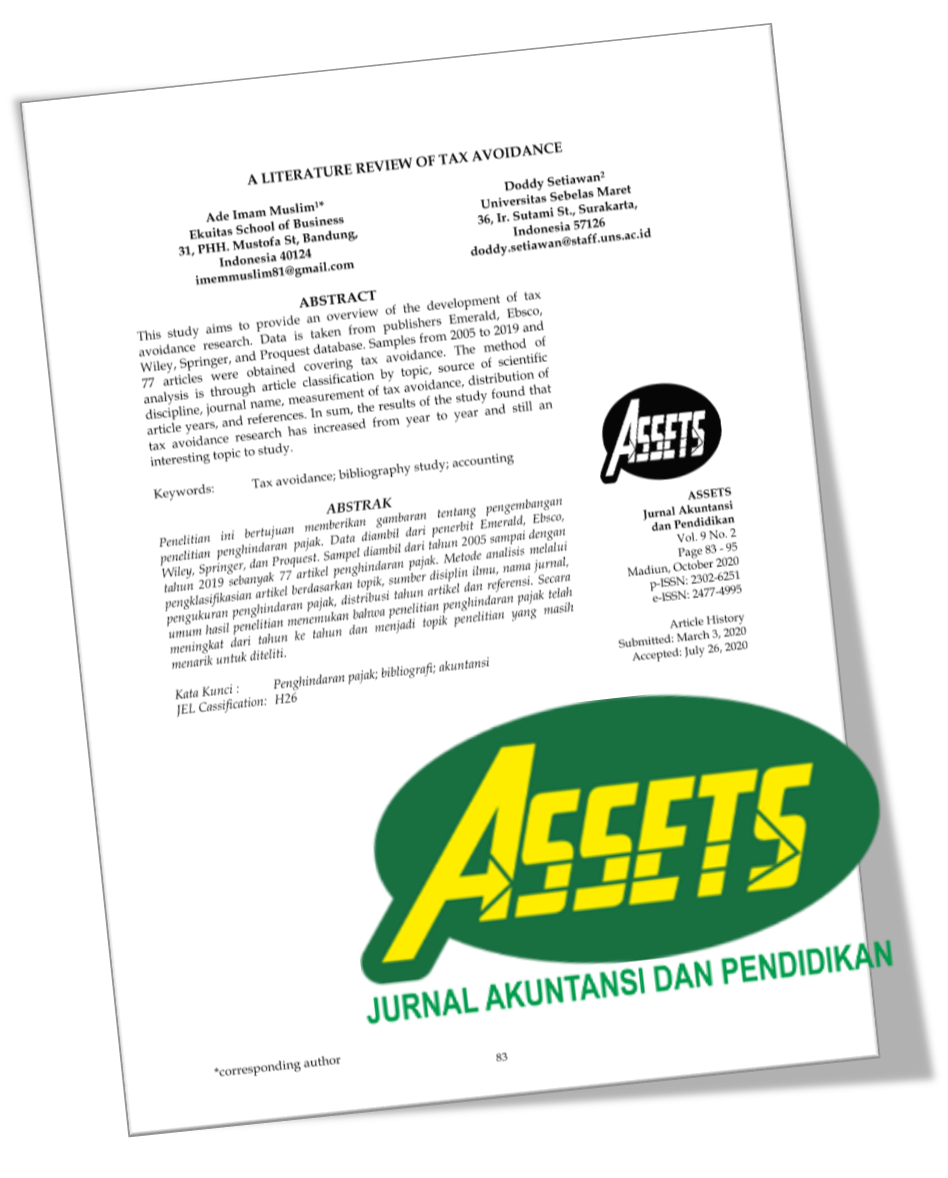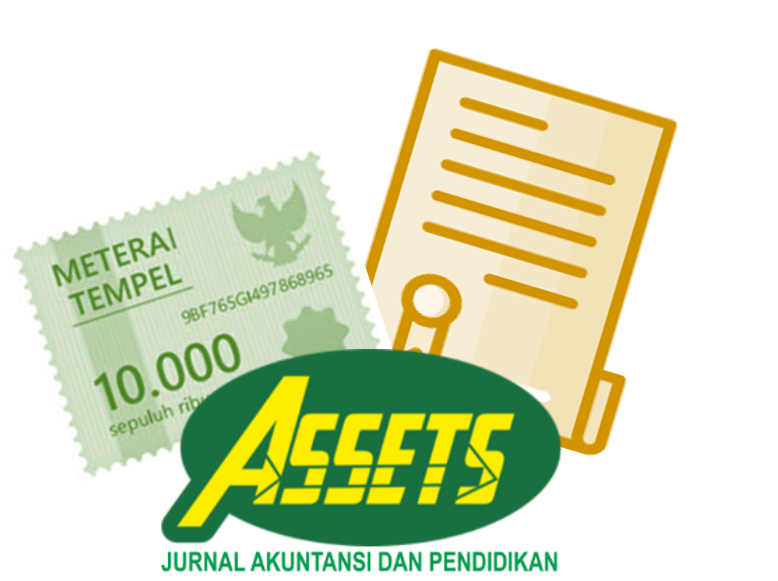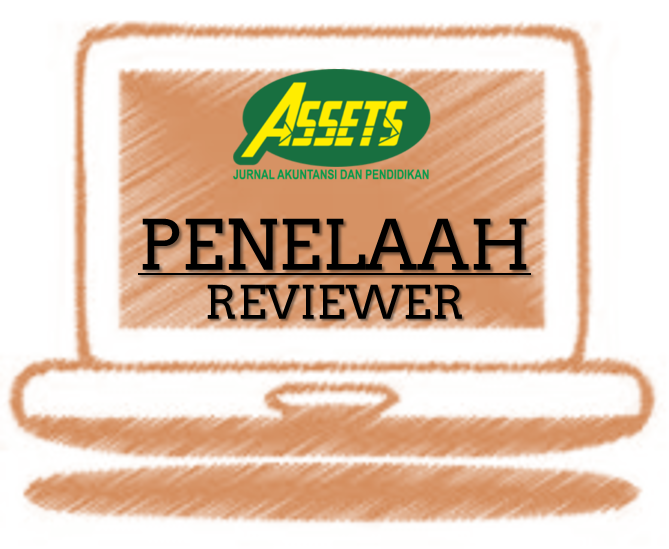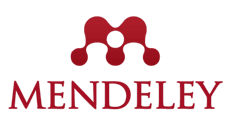OPTIMIZATION OF PROBLEM-SOLVING SKILLS THROUGH THE APPLICATION OF CREATIVE PROBLEM-SOLVING MODELS ASSISTED BY ACCOUNTING CARDS
DOI:
https://doi.org/10.25273/jap.v11i1.7213Keywords:
Learning Model, Creative Problem Solving, Working Card, Problem Solving Ability, Model Pembelajaran, Kartu Akuntansi, Kemampuan Pemecahan MasalahAbstract
ABSTRACT
According to the national education paradigm of the 21st century, the goal of accounting learning emphasizes the ownership of skills needed in the 21st century, including problem-solving skills. The Creative Problem Solving (CPS) learning model was chosen to improve learners' ability to solve a problem with structured steps so that learners will be accustomed to honing problem-solving skills. This is a classroom action research carried out in two cycles: planning, action, observation, and reflection. The research subjects were 33 students of class X Accounting 3 SMK N 3 Surakarta. The data collection techniques are tests, observations, interviews, and documentation. Techniques for testing the validity of data using source triangulation. The results showed an increase in problem-solving ability from the medium category in first cycle to the high category in second cycle.
ABSTRAK
Tujuan pembelajaran akuntansi menurut paradigma pendidikan nasional abad 21 menekankan pada kepemilikan keterampilan yang dibutuhkan pada abad 21, diantaranya kemampuan memecahkan masalah. Model pembelajaran Creative Problem Solving (CPS) dipilih untuk meningkatkan kemampuan peserta didik dalam menyelesaikan suatu masalah dengan langkah-langkah yang terstruktur, sehingga peserta didik akan terbiasa untuk mengasah keterampilan pemecahan masalah. Penelitian ini merupakan penelitian tindakan kelas (PTK) yang dilaksanakan dua siklus dengan tiap siklus terdiri dari perencanaan, tindakan, observasi dan refleksi. Subjek penelitian adalah 33 peserta didik kelas X Akuntansi 3 SMK N 3 Surakarta. Teknik pengumpulan data yang digunakan adalah tes, observasi, wawancara dan dokumentasi. Teknik untuk menguji keabsahan data menggunakan triangulasi sumber. Hasil penelitian menunjukkan terdapat peningkatan kemampuan pemecahan masalah dari kategori sedang pada siklus pertama meningkat menjadi kategori tinggi pada siklus kedua.
Downloads
References
Al Mallak, M. A., Tan, L. M., & Laswad, F. (2020). Generic skills in accounting education in Saudi Arabia: students' perceptions. Asian Review of Accounting.
Anggarini, D., Veronica, & B.R., Kartono,K (2015). Keefektifan Pembelajaran Core Berbantuan Kartu Kerja Pada Pencapaian Kemampuan Masalah Matematika dan Kepercayaan Diri Peserta didik Kelas VIII. Unnes Journal of Mathematics Education, 4 (2) , 1-9.
Anisah,Hanna., & Mawaddah, Siti. (2015). Kemampuan Pemecahan Masalah Matematis Siswa Pada Pembelajaran Matematika Dengan Menggunakan Model Pembelajaran Generative (Generative Learning) di SMP, Jurnal Pendidikan Matematika, 3 (2). (166-175). Diperoleh 10 Januari 2020, dari https://ppjp.ulm.ac.id/journal/index.php/edumat/article/view/644/0
As-Salam et al. (2018). Peningkatan Kemampuan Pemecahan Masalah Matematis Peserta didik Dengan Menggunakan Model Pembelajaran Creative Problem Solving Pada Materi SPLDV di kelas VII SMP Negeri 2 Takengon. Jurnal As-Salam, 2 (2),22-32.
Astina, Komeng Utaya, Sugeng & Setiawan F A (2019). The Effect of Creative Problem Solving Learning Models with Synectics Techniques Toward Student Creative Thinking Ability. International Journal of Recent Technology and Engineering (IJRTE).7.715-720
Hariani, P. P. (2019, November). Difference of Accounting Learning Results Using Model Creative Problem Solving Learning and Modelling The Way At Students Faculty of Teacher Training and Education. In Profunedu International Conference Proceeding (2). 89-91
Hu, R., Xiaohui, S., & Shieh, C. J. (2017). A study on the application of creative problem solving teaching to statistics teaching. Eurasia Journal of Mathematics, Science and Technology Education, 13(7), 3139-3149.
Lewis, P. A., Knoblich, G., & Poe, G. (2018). How memory replay in sleep boosts creative problem-solving. Trends in cognitive sciences, 22(6), 491-503.
Pepkin L Karen. (Eds). (2014). Creative Problem Solving in Math. Houston Teachers Institute. (p.1-14). Texas: University of Houston
Polya G. (1973) How to Solve it (A New Aspect of Mathematical Education). (Second Edition). New York: Doubleday & Company, Inc.
Sabban & Hayyun (2018) Peningkatan Kemampuan Pemecahan Masalah Matematika Dengan Model Pembelajaran Creative Problem Solving (CPS) Pada Peserta didik Kelas VIII A SMPN 1 Ciruas. E- Jurnal Mitra Pendidikan, 2 (10), 1078-1088,
Sagita, I., Medriati, R., & Purwanto, A. (2018). Penerapan Creative Problem Solving Model Untuk Meningkatkan Kemampuan Pemecahan Masalah Fisika Siswa Kelas XI MIA 4 MAN 2 Kota Bengkulu. Jurnal Kumparan Fisika, 1(3 Desember), 1-6.
Sari, D. M., Ikhsan, M., & Abidin, Z. (2018). The development of learning instruments using the creative problem-solving learning model to improve students' creative thinking skills in mathematics. In Journal of Physics: Conference Series, 1088, 012018
Singh, O. (2018). Role of Teachers in 21th Century: Opportunities and Challenges. International Journal of Scientific Research and Review, 7(5), 1-7.
Syariffudin, Hendra., & Sisriwati, Y.Y. (2019). The validity of learning Devices with Creative Problem Solving Models to Improve Mathematical Problem-Solving Ability. International Journals of Science and High Technologies ,13 (1), 67-73.
Treffinger, D. J., Isaksen, S. G., & Stead-Dorval, K. B. (2006). Creative problem solving: An introduction. Prufrock Press Inc..
Murwaningsih, T., & Fauziah, M. (2022). The effectiveness of the TASC, CPS, and DI on divergent thinking skill at elementary school in Indonesia. International Journal of Instruction, 15(1), 167-184. https://doi.org/10.29333/iji.2022.15110a
Udiyah., & Pudjiastutik. (Ed). (2017). Penerapan Model Pembelajaran Creative Problem Solving (CPS) terhadap Kemampuan Pemecahan Masalah IPA Kelas VII SMP Negeri 2 Tuban. Proceeding Biology Education Conference, hlm 540-544. Surakarta: FKIP Universitas Sebelas Maret
Utami, C., Citroresmi Prihatiningtyas, N., Rosmaiyadi, R., Husna, N., Wahyuni, R., & Mursidi, A. (2021, April). Ability of Problem Solving and Critical Thinking of Students in Learning of Creative Problem Solving (CPS). In 2021 The 6th International Conference on Information and Education Innovations (pp. 99-103).
van Hooijdonk, M., Mainhard, T., Kroesbergen, E. H., & van Tartwijk, J. (2020). Creative problem solving in primary education: Exploring the role of fact finding, problem finding, and solution finding across tasks. Thinking Skills and Creativity, 37, 100665.
Wieth MB, Francis AP and Christopher AN (2019) Use of a Creative Problem Solving (CPS) Approach in a Senior Thesis Course to Advance Undergraduate Publications. Front. Psychol.
Zubaidah (2017). Pembelajaran Kontekstual Berbasis Pemecahan Masalah Untuk Mengembangkan Kemampuan Berpikir Kritis. Prosiding Seminar Nasional Pendidikan Biologi Berwawasan Konservasi dalam Mewujudkan Sumber Daya Manuia yang Berkarakter. Hlm. 1-17. Makassar: FKIP Universitas Muhammadiyah Makassar.
Downloads
Published
Issue
Section
License
Perjanjian Lisensi dan Hak Cipta
Saat mengirimkan naskah ke jurnal, penulis menyatakan bahwa:
- Mereka diberi wewenang oleh rekan penulisnya untuk masuk ke dalam perjanjian ini.
- Karya yang dimaksud belum pernah diterbitkan secara resmi sebelumnya, kecuali dalam bentuk abstrak atau sebagai bagian dari kuliah, resensi, tesis, atau overlay jurnal yang diterbitkan.
- Karya yang dimaksud tidak sedang dipertimbangkan untuk diterbitkan di tempat lain,
- Publikasi karya yang dimaksud telah disetujui oleh semua penulis dan oleh otoritas yang bertanggung jawab - secara tahu sama tahu atau eksplisit - dari lembaga tempat pekerjaan itu dilakukan.
- Mereka mengamankan hak untuk mereproduksi materi apa pun yang telah diterbitkan atau dilindungi hak cipta di tempat lain.
- Mereka menyetujui lisensi dan perjanjian hak cipta berikut.
Hak Cipta
Penulis yang menerbitkan dengan ASSETS: Jurnal Akuntansi dan Pendidikan menyetujui persyaratan berikut:
- Penulis mempertahankan hak cipta dan memberikan jurnal hak publikasi pertama dengan karya yang secara bersamaan dilisensikan di bawah Lisensi Atribusi Creative Commons (CC BY-SA 4.0) yang memungkinkan orang lain untuk berbagi karya dengan pengakuan kepenulisan karya dan publikasi awal di jurnal ini.
- Penulis dapat masuk ke dalam pengaturan kontrak tambahan yang terpisah untuk distribusi non-eksklusif dari versi jurnal yang diterbitkan dari karya tersebut (misalnya, mempostingnya ke repositori institusional atau menerbitkannya dalam sebuah buku), dengan pengakuan publikasi awalnya di jurnal ini.
- Penulis diizinkan dan didorong untuk memposting karya mereka secara daring (misalnya di repositori institusional atau di situs web mereka) sebelum dan selama proses pengiriman, karena dapat menghasilkan pertukaran yang produktif, serta kutipan lebih awal dan lebih besar dari karya yang diterbitkan.
License and Copyright Agreement
In submitting the manuscript to the journal, the authors certify that:
- Their co-authors authorize them to enter into these arrangements.
- The work described has not been formally published before, except as an abstract or part of a published lecture, review, thesis, or overlay journal.
- That it is not under consideration for publication elsewhere,
- That its publication has been approved by all the author(s) and by the responsible authorities – tacitly or explicitly – of the institutes where the work has been carried out.
- They secure the right to reproduce any material already published or copyrighted elsewhere.
- They agree to the following license and copyright agreement.
Copyright
Authors who publish with ASSETS: Jurnal Akuntansi dan Pendidikan agree to the following terms:
- Authors retain copyright and grant the journal right of first publication with the work simultaneously licensed under a Creative Commons Attribution License (CC BY-SA 4.0) that allows others to share the work with an acknowledgment of the work's authorship and initial publication in this journal.
- Authors can enter into separate, additional contractual arrangements for the non-exclusive distribution of the journal's published version of the work (e.g., post it to an institutional repository or publish it in a book), with an acknowledgment of its initial publication in this journal.
- Authors are permitted and encouraged to post their work online (e.g., in institutional repositories or on their website) before and during submission, as it can lead to productive exchanges and earlier and more extraordinary citations of published work.

ASSETS: Jurnal Akuntansi dan Pendidikan is licensed under a Creative Commons Attribution-ShareAlike 4.0 International License.










